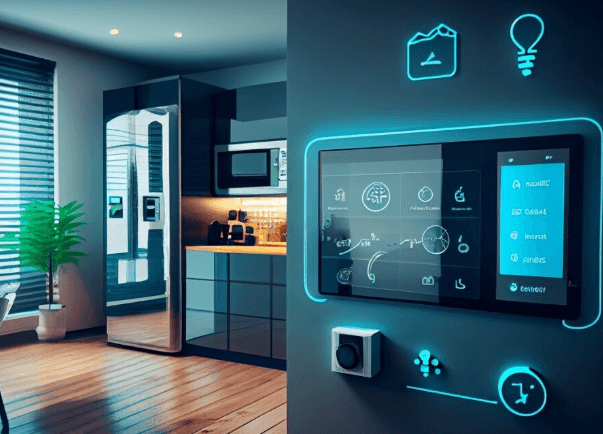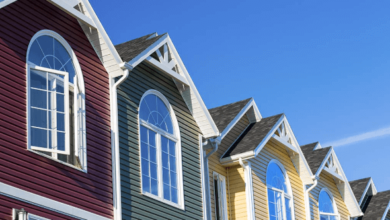Enhancing Residential Security with Smart Monitoring

In today’s fast-paced world, ensuring the safety of residential communities is more challenging than ever. With increasing urbanization and the growing number of apartment complexes, effective security measures are essential to protect residents and property.
One innovative solution that has gained significant attention is apartment remote surveillance. By harnessing the power of modern technology, property managers and residents can enjoy continuous, reliable monitoring that helps prevent incidents and enhances overall safety.
The Importance of Remote Surveillance in Apartments
Security threats in apartment buildings are diverse and often unpredictable. Unlike single-family homes, apartments typically involve multiple access points, shared facilities, and a high density of residents, all of which can present unique vulnerabilities. Effective remote surveillance addresses these challenges by offering a real-time, centralized monitoring system that provides actionable insights and rapid response capabilities.
See also: Digital Marketing Services to Drive Business Growth Online
Understanding the Concept of Remote Surveillance
Remote surveillance refers to the ability to monitor live video feeds and recorded footage from a centralized system, regardless of the observer’s physical location. This technology integrates high-definition cameras, sensors, and intelligent analytics to keep a watchful eye on the premises 24/7.
Key Features of Remote Surveillance Systems:
- Real-Time Monitoring: Continuous video feeds allow security personnel to observe events as they happen.
- High-Definition Imaging: Modern cameras capture clear images day and night, ensuring that every detail is visible.
- Intelligent Analytics: Advanced software detects unusual behavior or anomalies, triggering alerts that prompt immediate action.
- Cloud-Based Storage: Recorded footage is securely stored in the cloud, making it accessible for investigations and audits.
- Remote Access: Authorized users can access the surveillance system from any location via smartphones, tablets, or computers.
Apartment remote surveillance systems can be seamlessly integrated into the existing security infrastructure of residential communities, providing a robust layer of protection against theft, vandalism, and other criminal activities.
Key Benefits of Apartment Remote Surveillance
Implementing a remote surveillance system in an apartment complex comes with a multitude of benefits that extend far beyond basic monitoring. These systems not only enhance security but also contribute to operational efficiency and resident satisfaction.
Enhanced Security and Deterrence
The presence of a comprehensive surveillance system acts as a strong deterrent against criminal activity. Knowing that their actions are being monitored in real time can discourage potential wrongdoers from targeting the property.
How Remote Surveillance Enhances Security:
- Immediate Incident Detection: Real-time alerts enable quick intervention by security personnel, reducing the impact of security breaches.
- Comprehensive Coverage: Strategic placement of cameras ensures that all critical areas, such as entry points, hallways, and parking lots, are continuously monitored.
- Evidence Collection: High-quality footage provides valuable evidence in the event of criminal investigations, making it easier to identify and prosecute offenders.
- Increased Resident Confidence: Residents feel safer when they know that advanced security measures are in place, fostering a sense of community and well-being.
Operational Efficiency and Cost Savings
Remote surveillance systems can streamline security operations and reduce the need for extensive on-site security personnel. This can lead to significant cost savings and more efficient resource allocation.
Operational Advantages:
- Reduced Staffing Costs: By leveraging technology, property managers can maintain high levels of security with fewer on-site guards.
- Centralized Monitoring: Security teams can monitor multiple areas from a single control room, increasing operational efficiency.
- Automated Reporting: Intelligent analytics can generate automated reports, reducing the manual effort required to review hours of footage.
- Preventive Maintenance: Regular system diagnostics and automated alerts help ensure that the surveillance infrastructure remains operational and effective over time.
Scalability and Flexibility
Apartment remote surveillance systems are highly scalable, making them an ideal solution for properties of all sizes. Whether managing a small residential building or a large multi-story complex, these systems can be customized to meet the specific needs of the property.
Scalability Benefits:
- Modular Design: Systems can be expanded incrementally as the property grows or as security needs evolve.
- Customizable Configurations: Camera placement, alert settings, and storage capacities can be tailored to suit different areas of the building.
- Integration Capabilities: Modern surveillance systems integrate seamlessly with other security solutions, such as access control and alarm systems, creating a unified security ecosystem.
Improving Emergency Response and Incident Management
In emergencies, every second counts. Remote surveillance provides security teams with the tools they need to respond quickly and effectively to incidents.
Emergency Response Features:
- Rapid Alert Systems: Automated alerts notify security personnel of potential issues, allowing for swift action.
- Live Feed Access: Real-time video feeds provide critical situational awareness during emergencies, guiding response efforts.
- Incident Documentation: Detailed records of security events facilitate post-incident analysis and help improve future response strategies.
- Collaboration with Local Authorities: High-quality video evidence can be shared promptly with law enforcement, expediting investigations and legal processes.
Technology Integration in Remote Surveillance
Modern apartment remote surveillance systems leverage cutting-edge technology to provide enhanced monitoring and data analytics. These innovations are transforming how residential security is managed and implemented.
High-Definition and Infrared Cameras
The foundation of any robust surveillance system is its camera technology. High-definition cameras ensure that every detail is captured, while infrared capabilities enable clear imaging even in low-light or nighttime conditions.
Camera Technology Features:
- Wide Dynamic Range (WDR): Improves image quality in challenging lighting conditions.
- Night Vision: Infrared sensors allow cameras to capture clear footage in complete darkness.
- Pan-Tilt-Zoom (PTZ): Enables dynamic monitoring, allowing operators to focus on specific areas as needed.
- Weatherproof Designs: Ensures reliable performance in various environmental conditions.
Intelligent Analytics and Machine Learning
The incorporation of intelligent analytics and machine learning algorithms enhances the effectiveness of remote surveillance systems. These technologies can identify unusual patterns and trigger alerts, reducing the need for continuous manual monitoring.
Benefits of Intelligent Analytics:
- Behavioral Analysis: Algorithms detect deviations from normal activity patterns, flagging potential security threats.
- Automatic Alerting: When an anomaly is detected, the system sends an immediate alert to security personnel.
- Data Correlation: Integration with other security systems allows for the cross-referencing of data, leading to more accurate incident detection.
- Continuous Improvement: Machine learning enables the system to adapt over time, improving accuracy and reducing false alarms.
Cloud Storage and Remote Accessibility
Cloud-based storage solutions provide secure, scalable, and accessible storage for surveillance footage. This technology ensures that recorded data is safely preserved and easily accessible when needed.
Cloud Storage Advantages:
- Enhanced Security: Data is encrypted and stored in secure, off-site servers.
- Scalability: Storage capacity can be expanded as needed without significant infrastructure investment.
- Remote Accessibility: Authorized users can access footage from anywhere in the world via secure internet connections.
- Cost Efficiency: Cloud storage reduces the need for on-site storage hardware and its associated maintenance costs.
Implementing Apartment Remote Surveillance: A Step-by-Step Guide
Deploying a remote surveillance system in an apartment complex requires careful planning and execution. The following steps outline the process for a successful implementation.
Step 1: Conduct a Comprehensive Security Assessment
Before installing a remote surveillance system, conduct a thorough assessment of the property to identify vulnerable areas and determine the optimal camera placements.
Security Assessment Considerations:
- Evaluate Entry and Exit Points: Identify all potential access routes that need monitoring.
- Map Critical Areas: Determine high-traffic areas such as lobbies, hallways, and parking facilities.
- Analyze Lighting Conditions: Assess areas with poor lighting that may require additional infrared or supplemental lighting solutions.
- Consult Residents and Staff: Gather input from those who use the property regularly to understand their security concerns.
Step 2: Develop a Customized Surveillance Plan
Based on the security assessment, design a surveillance plan that addresses the unique needs of the apartment complex. This plan should detail camera locations, types, and the integration of additional security technologies.
Key Components of the Plan:
- Camera Placement Strategy: Ensure comprehensive coverage with minimal blind spots.
- Integration with Existing Systems: Coordinate the surveillance system with access control, alarms, and other security measures.
- Data Management Protocols: Establish guidelines for data storage, retrieval, and privacy compliance.
- Emergency Response Procedures: Define protocols for responding to alerts and handling incidents.
Step 3: Install and Configure the System
Professional installation ensures that the surveillance system operates at peak performance. This phase includes the physical installation of cameras, network configuration, and system integration.
Installation Best Practices:
- Professional Installation: Hire experienced technicians to ensure proper setup and calibration.
- System Testing: Conduct comprehensive tests to verify that all components are working correctly.
- User Training: Provide training for property management and security staff on system operation and maintenance.
- Documentation: Maintain detailed records of the installation, including camera locations, settings, and maintenance schedules.
Step 4: Monitor and Maintain the System
Once the system is operational, ongoing monitoring and regular maintenance are crucial to ensure its long-term effectiveness.
Maintenance Strategies:
- Regular Inspections: Schedule periodic reviews to check camera alignment, connectivity, and overall system performance.
- Software Updates: Keep the system’s software up to date to protect against vulnerabilities and improve functionality.
- Responsive Support: Establish a support plan with the service provider to address any issues promptly.
- Performance Metrics: Monitor key indicators such as response times, incident detection rates, and system uptime to evaluate effectiveness.
Future Trends in Apartment Remote Surveillance
The landscape of remote surveillance is continuously evolving as new technologies emerge. Staying informed about future trends can help apartment complexes remain at the forefront of security innovation.
Integration of IoT Devices
The proliferation of Internet of Things (IoT) devices is leading to more interconnected security systems. In the future, sensors, cameras, and alarms will communicate seamlessly, providing a comprehensive security ecosystem.
Advanced Artificial Intelligence
As AI technology matures, remote surveillance systems will become even more predictive and proactive. Future systems may analyze patterns in real time to forecast potential security breaches before they occur.
Enhanced User Experience
The future will bring more intuitive interfaces and mobile applications, allowing residents and security personnel to monitor and control the surveillance system with ease. This will make remote surveillance not only more effective but also more user-friendly.
Sustainability and Energy Efficiency
Advances in energy-efficient camera technology and renewable energy sources will further reduce the operational costs of remote surveillance systems, making them an even more attractive option for residential properties.
Conclusion
Apartment remote surveillance represents a significant leap forward in residential security. By leveraging modern technology such as high-definition cameras, intelligent analytics, and cloud storage, property managers can create a secure, efficient, and user-friendly environment for residents. The benefits of enhanced security, operational efficiency, and improved emergency response make this an essential investment for any apartment complex.
As urban environments continue to evolve, remote surveillance will play an increasingly vital role in safeguarding communities. For those looking to explore innovative security solutions, consider the advantages of apartment remote surveillance as part of a comprehensive security strategy.
By conducting thorough assessments, implementing customized plans, and staying abreast of future trends, property managers can ensure that their surveillance systems remain effective and resilient against emerging threats. Ultimately, the goal is to create a safe, welcoming environment that enhances the quality of life for residents while providing peace of mind through continuous, smart monitoring.





